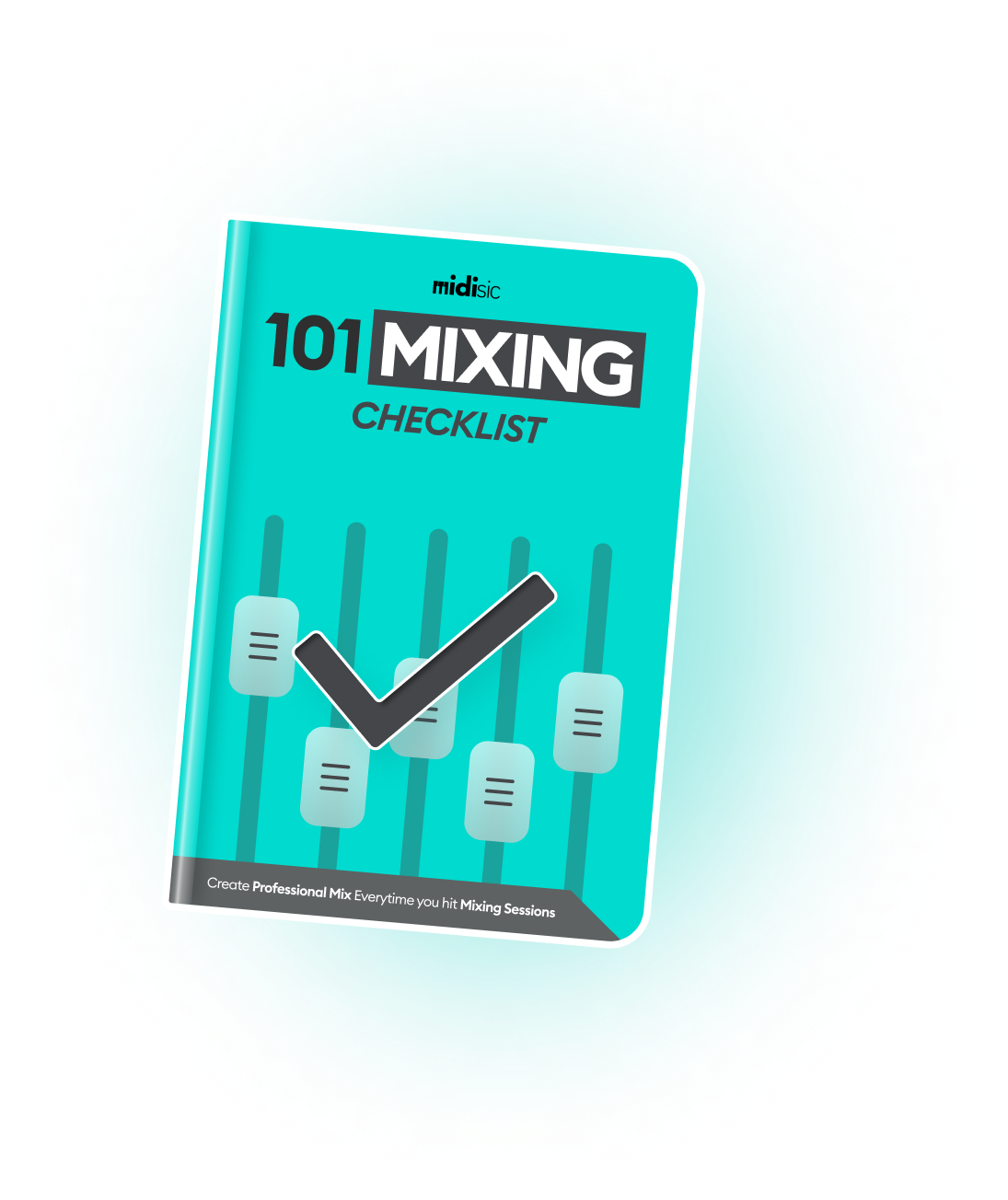



If you want to Mix your Music like Professionals, You have to Learn from the Professionals, and with the help of this Mixing Ebook, now it's EASY for You.





Supported by:










Revolutionize your music production journey with MIXOLOGY – the ultimate solution for aspiring producers and seasoned professionals alike.
Are you tired of feeling lost in the mixing process, unsure of where to start or how to proceed? Say goodbye to frustration and hello to unparalleled guidance with our powerhouse bundle. Dive deep into the art of mixing with our expertly crafted Ebook and indispensable resources, meticulously designed to elevate your sound to professional heights.
Whether you're working in a state-of-the-art studio or the comfort of your bedroom, MIXOLOGY empowers you to create stunning mixes that demand attention. Don't settle for mediocre results – join the ranks of top-tier producers who trust MIXOLOGY to unlock their full potential. Embark on your journey to sonic excellence today.


We know the feeling of having a good song in front of you that made with efforts but just because you can't mix it properly, it remains unfinished!
One of the most Important thing while Mixing is knowing when to Stop. Overdoing anything can Ruin your Mix.


EQing is the most Crucial part of Mixing, BUT if not used correctly it can RUIN your Mix by taking the feel of your Instruments. This is where these Frequency Charts becomes Handy!

WANT TO CREATE A BIGGEST EDM ANTHEM?
This pack is what you need! A versatile production toolkit that provides you with more than just live synth hooks, cool basic levels, powerful drums, FX, and more.



Here’s what other Instagram Producers say about Mixology









I was in the same situation as you guys before I launched Midisic; I understand what it's like to have great song ideas but terrible mixing abilities. It stole all of the joy from creating music.
When I first started producing, my primary issue was a BAD MIX. I had costly equipment, but it didn't seem like I was getting any better results with it.
Making music was enjoyable for me, but I would constantly run into the same issues when it came to mixing that song:
All these problems made me end up in a never ending loop of GUESS-MIXING, and never helped to finish a single good music.
BUT Then I decided to take a long break and learn Mixing no matter how much time it takes. I had few contacts with professional engineers who were already doing great in this field. So I asked them if I could work for them in exchange of working in their studio for free. They agreed and I started to learn from them for around an year.
This is where everthing changed for me!
This is me Now
In the learning process, I understood various steps that were missing earlier and were needed to fill up.
Now a thought came to my mind about how many producers would be out there looking for a perfect teacher who can teach them the things they need to know and not just any random topic from in between.
With the hope of providing the knowledge I received, I along with my brother started an Instagram page "MIDISIC". From that platform, our aim was to provide the valuable knowledge about music on every topic. Started with ZERO, but gradually with the support of fellow young music producers, we reached to a great height. And we were happy teaching them everything from our Instagram page.

We successfully shared 150+ Informative tips and tricks that received massive response and blessings. But somewhere I learned that within the limit of few slides, We couldn't explain everything. As the knowledge will be distributed partially and not fully at a time. Here came an Idea to create a Mixing Ebook containing all of my experiences and learnings that I could share with you guys.
In this Mixing Ebook, you'll get everything from start to finish about mixing and nothing random. Learning things from anywhere, we can know partially about it, but without knowing the thing you want to learn in sequence, will leave you unconfident and in doubt.
After finishing this Mixing Ebook, I'm sure, you'll be confident and from the next time when you sit in front of your DAW, with a track to mix, you'll automatically get ideas on WHAT TO DO NEXT.



Here’s what more people talk about Mixology





There is nothing in this Mixing Ebook that you won’t understand, even if you are a beginner. This book is made to take your mixing skills from basic to advance level no what at what stage you are as a producer.
You have to enter your correct email address while purchasing.
Once you purchased it you will be redirected to the Download Page and also an email will be sent to that email address. Then you can easily start reading it and improve your mix.
You can pay with PayPal or through your Debit or Credit card which is supported by PayPal itself which means the highest level of security for you.
If you want to buy through UPI/Google Pay Tez, Paytm, etc. (For Indians Only) DM us on Instagram from here.
Chances are very less that you would face any error but if it happens, simply email us on info@midisic.com or contact us from here
Here also the chances are very less that you won’t like Mixology, but if that happens for any reason, simply Email Us here info@midisic.com or DM us here. under 7 Days We will give you a Full Refund.
Looks like you haven't made a choice yet.